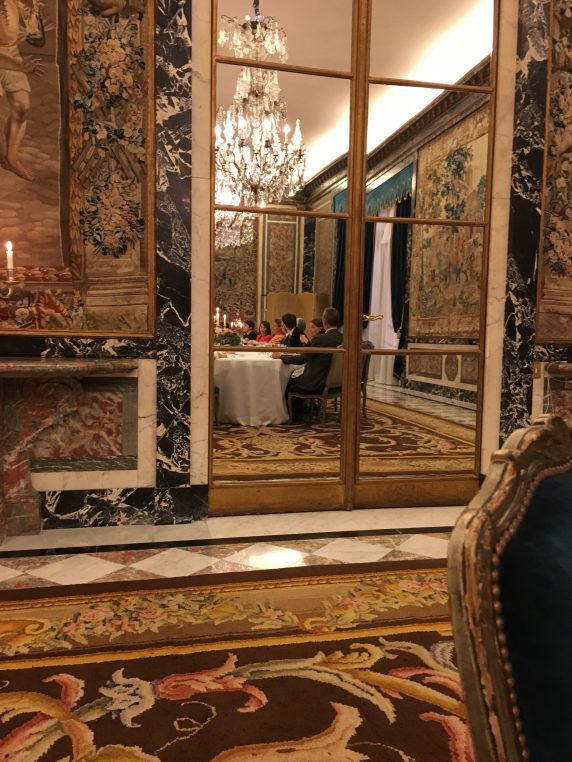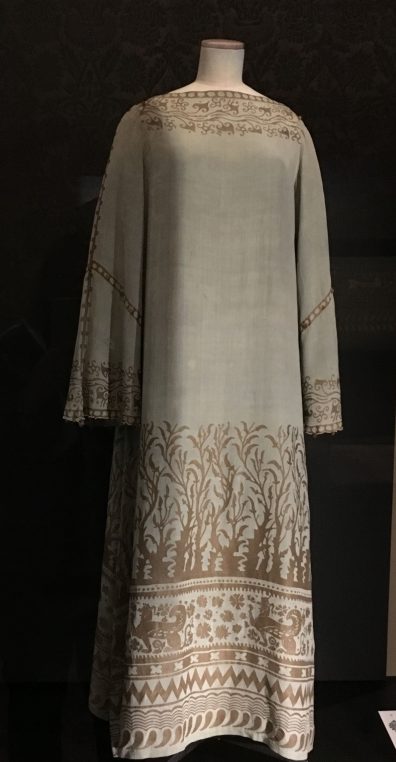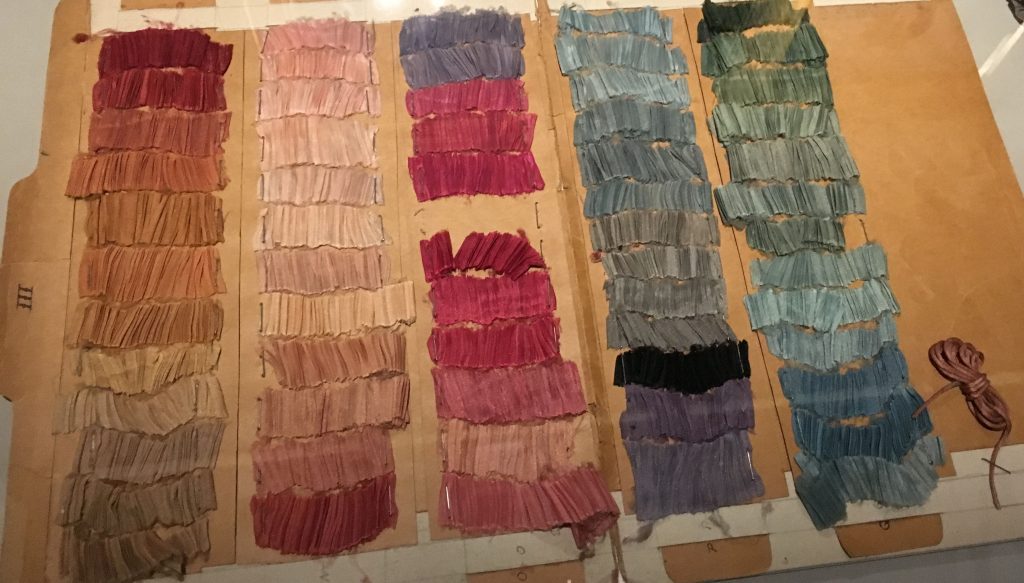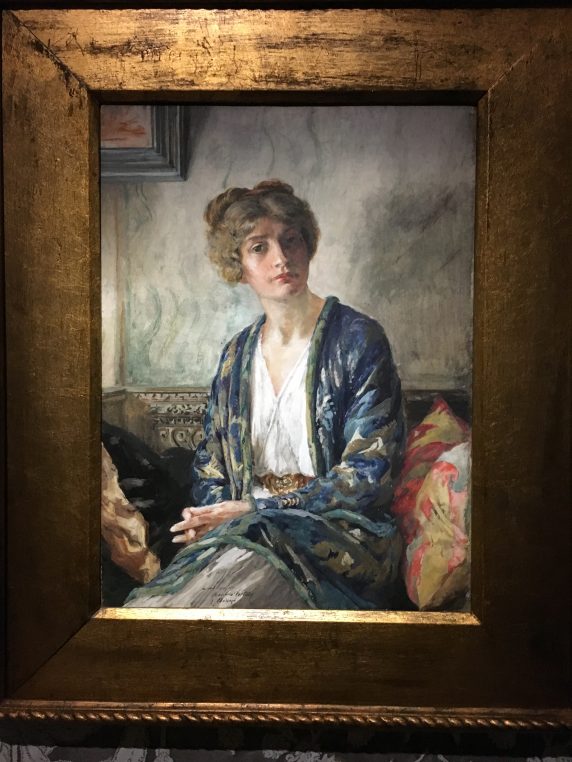
Mariano Fortuny, Portrait of Henriette Nigrin, (Mrs Fortuny), ca 1915, Fondazione Musei Civici di Venezia
Fashion genius Mariano Fortuny was born in Granada in 1871, but adopted Venice as his home after a stint in Paris. The son of a famous Catalan painter, he invented new kinds of printed fabrics for dresses, took photographs, made oil portraits and is mostly famous for his Delphos gown which has inspired Issey Miyake. Palais Galliera is showing more than a hundred pieces created by this very special artist, with fabulous historical research done by curator Sophie Grossiord.
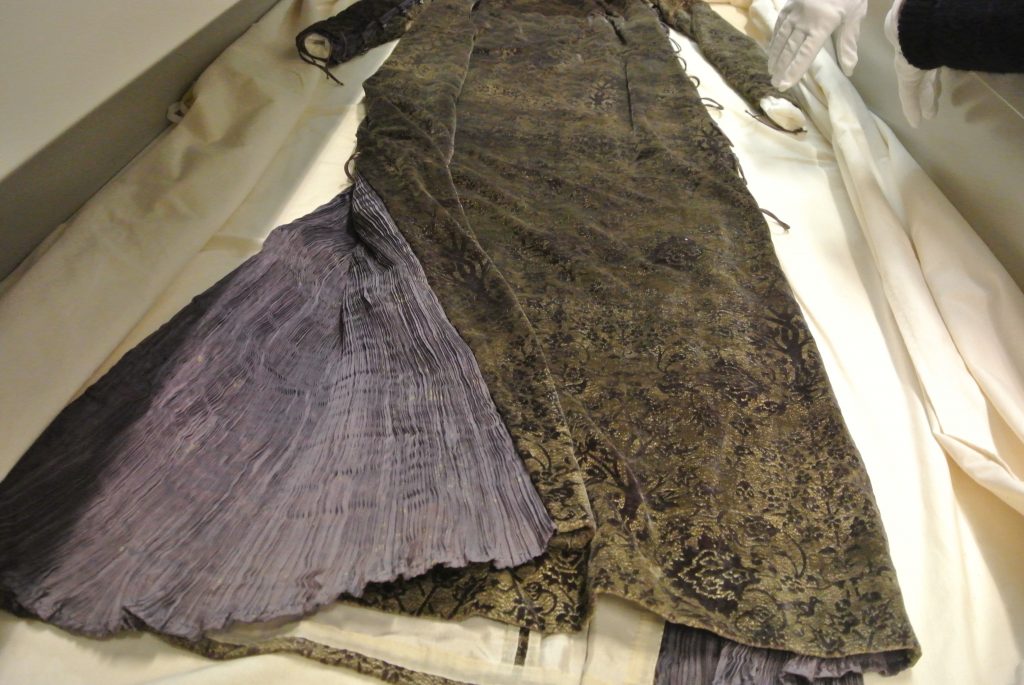
Detail of the Eleonora dress, purple velvet silk printed in gold which belonged to Elaine Greffulhe, duchesse de Gramont in 1912
Fortuny dressed the most elegant ladies at the turn of the century but he was first an artist, turning fabrics with subtle reflections of light into works of art and finding his inspiration in Venetian museums. His gold printed chocolate silk velvet for a coat in 1920 rivals with the Eleonora gown of 1910 or golden capes of 1920.
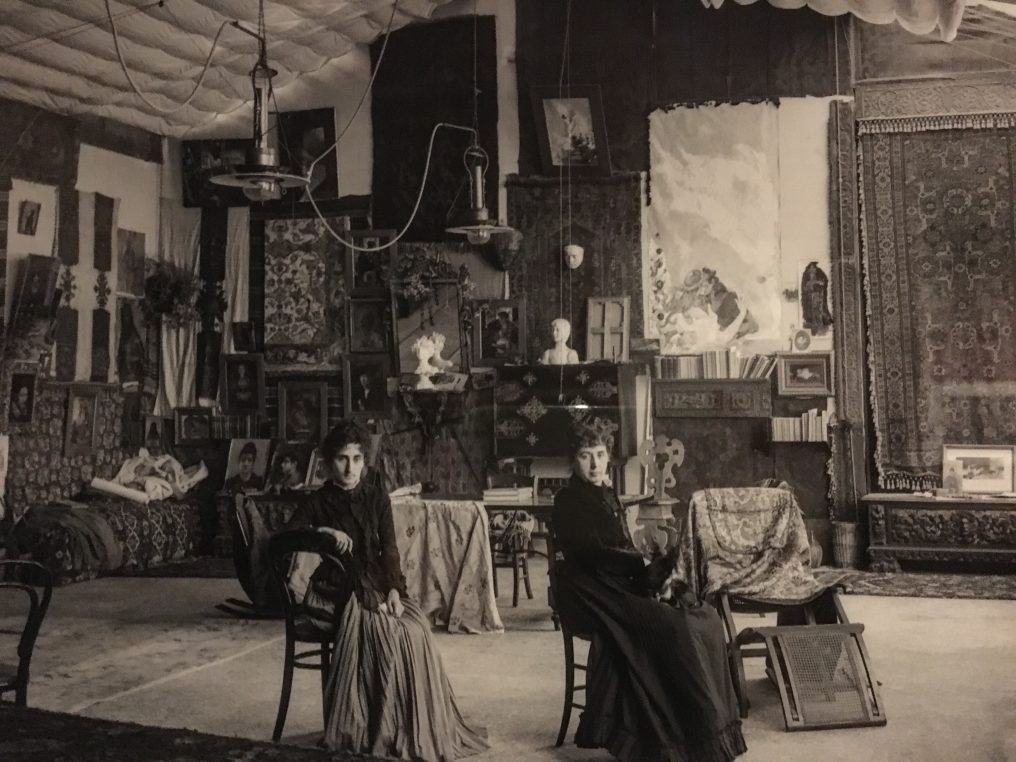
Mother and daughter, Cecilia and Maria Luisa Fortuny at palazzo Martinengo, on the Grand Canal, 1895
Very inspired by Greek fashion, he invented the Delphos gown, made of fine pleated taffeta in 1909 and patented it in 1912. It followed the movements of the body and liberated women’s forms giving them a freedom that crinolines had paralyzed. The list of his clients is International and he was a true European, as Spanish Ambassador Fernando Carderera mentioned in his short speech at the Embassy after the opening.

Dress Eleonora, bronze silk velvet or gold printed, 1910, belonged to British actress Ellen Terry and then to Catherine Willis who wore it for her wedding
In a decor created by Jose Maria Sert in 1928 and after a drink in the living room lined with tapestries designed by Goya, Daniela Ferretti, who runs the Palazzo Fortuny in Venice, conversed with French and Spanish curators who had come from Museo del Traje in Madrid.
The designer’s father, Mariano Fortuny Marsal was a famous painter in Spain but he died at 36. The Prado museum is devoting an exhibition to his work in November. But it is “our” Mariano Fortuny, who was recently celebrated at the Ermitage in St Petersburg.
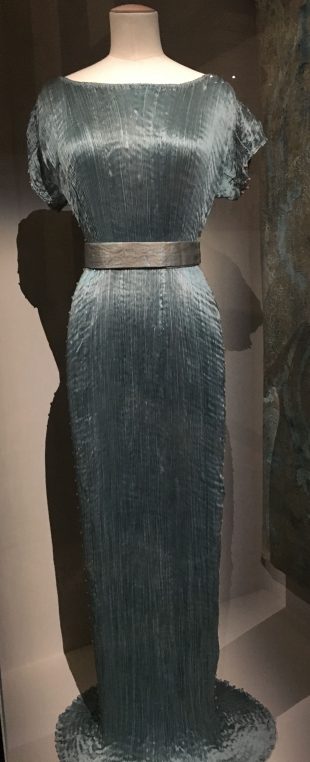
Delphos gown, celadon green silk. This one was worn by Oona Chaplin and her daughter Geraldine, Museo del Traje
Very inventive in styles and a lover of Oriental costumes, Fortuny designed abayas, kaftans, capes, coats and tunics to be worn over the Delphos gown. He developed intimate clothes for ladies to wear at home and dramatic coats to wear over them. He employed up to a hundred workers in his Venice workshop where velvets and silks were dyed and printed.
What is most interesting in this show is the research done by Sophie Grossiord to find the wood blocks and silk screening tools, the preparatory cartons and stamping tools which are exhibited here. Also the sales catalogs which had never been exhibited before and tell us exactly who was ordering and at what price.
There are many photographs of his wife Henriette and of models wearing his dresses but also of his palazzo and his studio. The Fortuny Palazzo in Venice and Museo del Traje in Madrid lent major pieces.
I discovered Fortuny through the book published in 1980 by art historian Guillermo de Osma and reprinted last year by the Victoria and Albert museum.
It is a fabulous album of fabrics and comprehensive study of all works of art by the great master. For his creativity was endless. He designed decors and lamps, costumes for the ballet and was for a long time mostly well known in Venice for his photographs of which the four “Sky and clouds” shown at Galliera are amazingly modern. His career as an artist, his sense of light and use of fabrics is particularly well rendered here.
Very present in the exhibition is his wife, Henriette, who was his muse and whom he photographed and painted at length. Born in Fontainebleau, she met the couturier in Paris and helped him develop his first silk shawls in Venice. She then worked on the dying and printing of his fabrics. They developed together a cotton factory on the island of Giudecca. Many printing process are exhibited here showing what incredible technical research went into the fabrics. And I loved the different colors of pleated silks shown below.
Fortuny was admired by many of his successors including Paul Poiret, Jeanne Lanvin (a client) and Issey Miyake who used his technique of pleats on different materials. He was also referred to by Proust who met him in Venice in 1900 with Reynaldo Hahn, by Leslie Poles Hartley and Mary Mc Carthy. He was close to D’Annunzio and Henri de Régnier and loved Wagner.
He collaborated on directing and lighting operas and designed costumes for ballets. But he also created lamps and designed furniture. So you will be surprised when you enter this exhibition at the Museum of fashion to find much more. Art history at its best in the first half of the Twentieth century, the story of a Spaniard, turned Venetian, who spoke German and French as well as English.
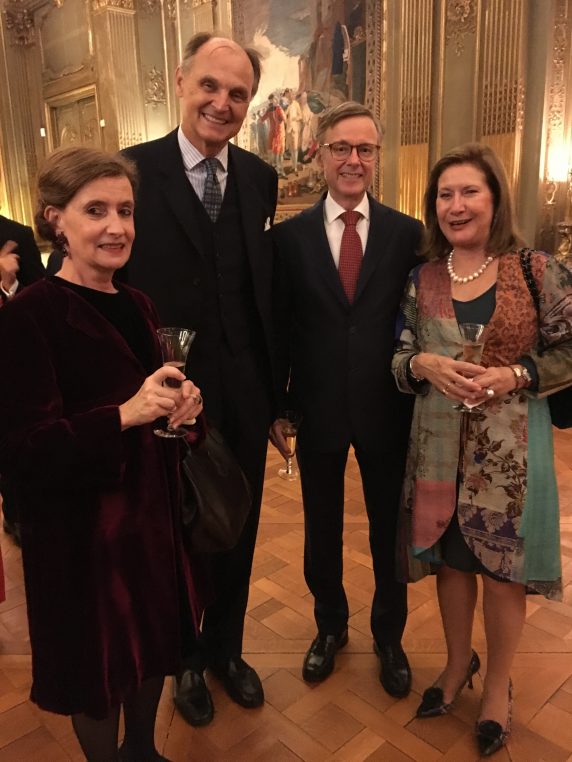
Sophie Grossiord, Guillermo de Osma, ambassador Fernando Carderera and his wife Victoria at the Embassy
This show is the last one under the directorship of Olivier Saillard at Palais Galliera. He was a great influence in opening up the museum to crowds of fashion lovers and will be regretted. (until January 7, 2018)
Share this Post
